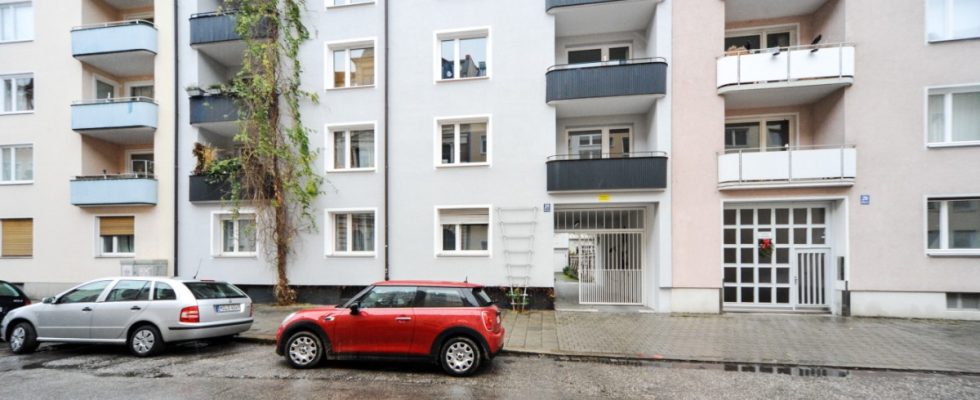A good three years ago, the fundamentally reformed law on home ownership came into force, an update of the previous regulations full of preventative paragraphs and blocking options. The new regulations should make homeowners’ associations more adaptable. Energy transition and digitalization, traffic jams in renovating old buildings, the needs of an aging society – all of this was put into paragraphs.
New laws always result in court cases, and the first cases have now reached the Federal Court of Justice. In December, the fifth civil senate of the BGH negotiated on the issue of accessibility, followed at the end of January by a hearing on the new instruments for distributing costs for renovations. Judgments are now imminent in both cases.
Two cases that the Federal Court of Justice will decide on March 22nd illustrate the new freedom of the owners’ association when it comes to distributing costs. Afterwards, measures to maintain the facility can be imposed on individual owners – even where the community was previously responsible.
In one of the cases, an owner objects to having to pay a few thousand euros alone to replace a defective roof window. In a way it is “his” window because he lives in the attic, but formally the window is part of the community property. Until now, all owners had to bear the costs for this, but in August 2021 the owners’ association used the still fresh reform law for a surprising move: They decided to replace the window, gave the order to a specialist company – and forced the roof dweller to pay the costs. Because ultimately he is the beneficiary of the renovation.
There is also a dispute in another case about whether repairs that do not benefit all owners equally can be imposed on certain owners by decision on a case-by-case basis. An owner who owned four so-called double parking spaces in the underground car park of a residential complex had sued, parking spaces that are operated with a lifting system. Because the hydraulic system, which is owned by the community, is defective, he demands that it be repaired – even at the expense of the owners who have nothing to do with it. Here too, the community reacted with an ad hoc change in the distribution key: only those who have a double parker should pay.
It all sounds small, but it has consequences that can be expressed in euros
Such majority decisions are possible under the new paragraph 16, which regulates how the “community costs” are distributed. Normally the distribution is based on the ownership shares, but the second paragraph states somewhat succinctly that the apartment owners can decide on a different distribution “for individual costs or certain types of costs”. The regulation is very broad, said BGH Senate Chairwoman Bettina Brückner during the hearing. “It could suggest that the group of people who are liable for costs should be allowed to change.”
This was not permitted under the previous legal situation. It was permissible to change the scale of distribution. But it was not possible for the circle of those who have to pay for repairs to be redrawn by a majority vote without further ado. A lawyer in the double parker case countered that the owners’ trust in the maintenance reserves saved would be disappointed if the cost burden was distributed among a few shoulders. However, after the negotiation it seems obvious that the costs should at least be imposed on those who really benefit from the parts of the common property in question – the skylight and the double parker.
The discussion in the courtroom revolved more around fundamental questions: Does such a costs decision have consequences for the future? If a decision is made about a roof window, does the cost distribution for window repairs have to be re-regulated for the entire community? Or does the flexibility that should be introduced with the reform law also allow the slim individual case resolution, which initially only applies to one window? It all sounds small, but it has consequences that can be expressed in euros.
In another BGH case, which will be decided on February 9th, it was at least undisputed who would bear the costs. This is about construction measures for accessibility. In one case, an elevator should be built in the backyard of a chic property near the English Garden, in the second case, a terrace including a ramp on the back of a house. Individual owners wanted to enforce this and would pay for it; The elevator was estimated at around 200,000 euros, distributed between the owners on the third and fourth floors.
Expressly preferred: installation of charging stations and connection to digital networks
Can individual owners enforce such changes against the community? The answer to this is comparatively easy because the law itself provides it: owners can request structural changes to create accessibility. “Such structural changes are privileged,” says Michael Nack from the consumer protection association for home ownership. “This is a social goal because the issue of age and frailty is becoming increasingly important demographically.” The principle of precaution applies here: anyone who wants to ensure accessibility does not have to be affected themselves.
The installation of charging stations, burglary protection and connection to high-capacity digital networks are also expressly privileged. The law is also committed to promoting e-mobility and digitalization, and the need for security anyway. The community cannot refuse such claims – as long as it is a question of whether.
BGH Senate Chairwoman Bettina Brückner also hinted at the hearing that there would be little scope for the owners to completely reject such an elevator. “But the community is in charge of how,” she added. If there are visual or static concerns about an elevator, then the community certainly has the opportunity to influence it. Judge Alfred Göbel summarized it like this: “Perhaps the music plays more during the execution.” Which could provide material for further BGH rulings.

